Jusant review - vertical limit
Platform reviewed: PC
Available on: PS5, Xbox Series X|S, PC
Release date: October 31, 2023
Don’t Nod’s climbing adventure game Jusant has an epic tower at its center that has the same hypnotic pull on me as that of the best video game mountains. Be it the epic peaks or sweeping mountain ranges, whenever I see a huge mountain in a game, my first thought is: ‘I’m absolutely going to climb that’. And Jusant’s impossibly tall structure that sits right at the heart of the game is no different.
Playing as a young traveler, you're tasked with vertically traversing this colossal structure with nothing but your climbing gear and a watery alien friend to lend a hand. The goal of this endeavor is to reach the top, navigating your way up the tower’s treacherous cliff face while piecing together its mysterious past. Those not keen on heights might want to sit this one out, as Jusant majestically captures the dizzying thrills but also quiet reflections found in climbing.
The climbing can be as simple as maneuvering through the man-made structures that are scattered throughout the tower - the only things left of a lost civilization - but for the most part you’ll be using the natural grip holds of the rock face together with your own tools and climbing techniques. Abseiling, wall running, and rope swinging are all part of your move set, but the most nerve-shredding is Jusant's jump where you hold down a button to power up before launching yourself in the desired direction, and then scramble to find purchase when you connect with the wall again. It's wonderful, if terrifying and Jusant's climbs have plenty of heart-racing thrills - and frightening drops.
Get a grip
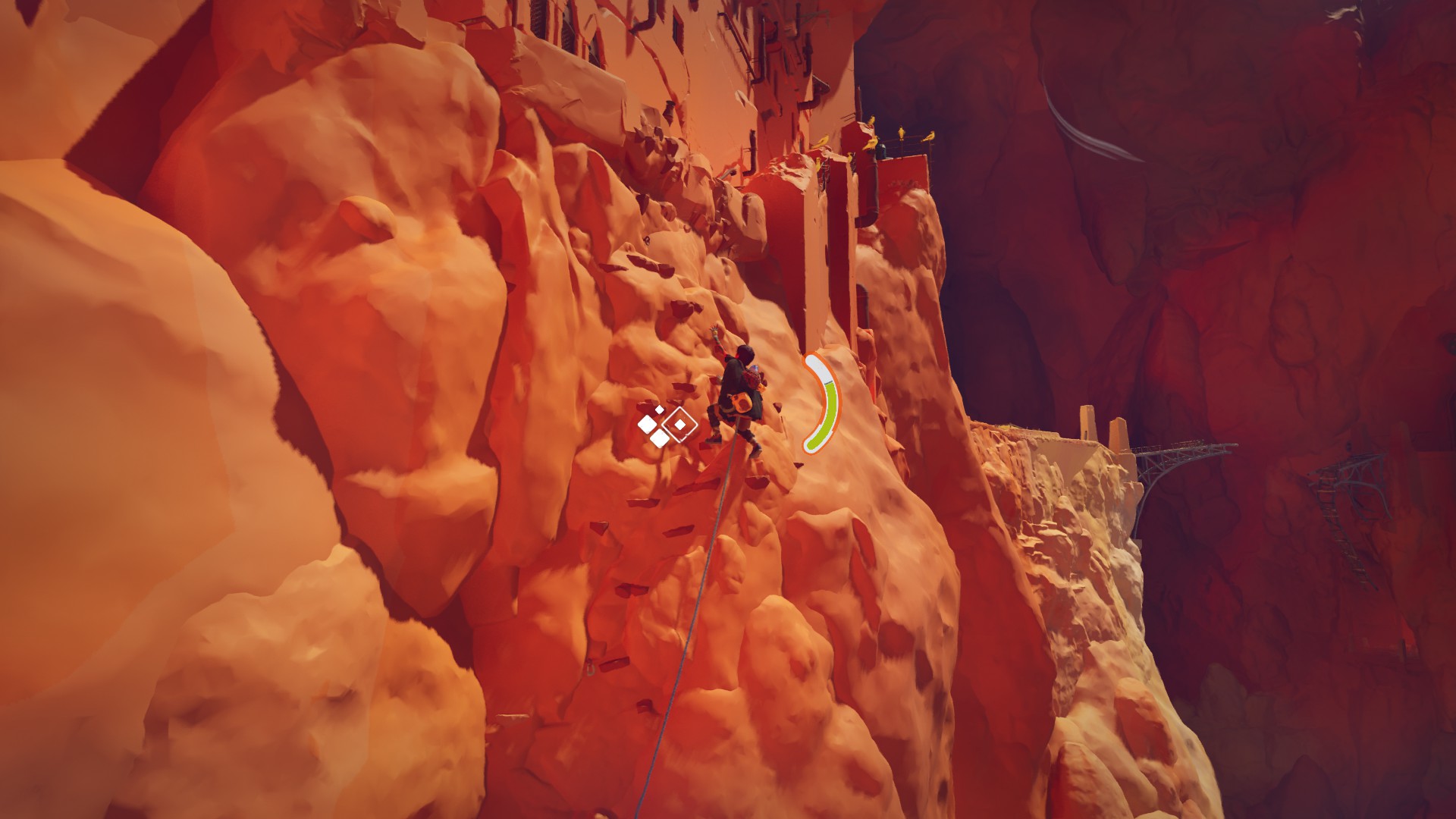
Thankfully, there's no way you can plummet to your death if you do mess up a maneuver. You’re always attached to the rock face thanks to your trusty rope, and pitons you can bang into the wall, a safety feature and vital progress saver if you mistime a jump. However, both have their limitations. Your trusty lifeline is not infinite, meaning if it runs out mid-climb you'll need to back up and find a more efficient route to your destination. You only have four pitons so you need to be strategic when using them on long stretches of climbs. And finally, there’s your stamina meter which depletes as you climb. You can partially refill it by resting regularly, but you'll need to find solid ground to stand on for it to completely replenish. All these restrictions mean that you need to carefully plan your route, mentally mapping how you’re going to navigate tricky stretches as well as how to overcome environmental obstacles. You're essentially trying to solve one big vertical puzzle.
Sometimes solutions won’t present themselves until you're mid-climb, and that’s where Jusant’s flair for drama kicks in. On top of figuring out what climbing technique is best for this situation, how many pitons you've got, and how much rope you have left, you also need to grapple with the game's control scheme. Jusant takes influence from 2015's climbing game Grow Home, where the controller's two triggers control each of the character’s grip - the left trigger for the left hand, and the right trigger for the right hand. This means as you climb, you need to keep switching between triggers as the traveler climbs the wall. It’s an incredibly tactile climbing system, and there's always a constant underlying tension that if you let go, they let go.
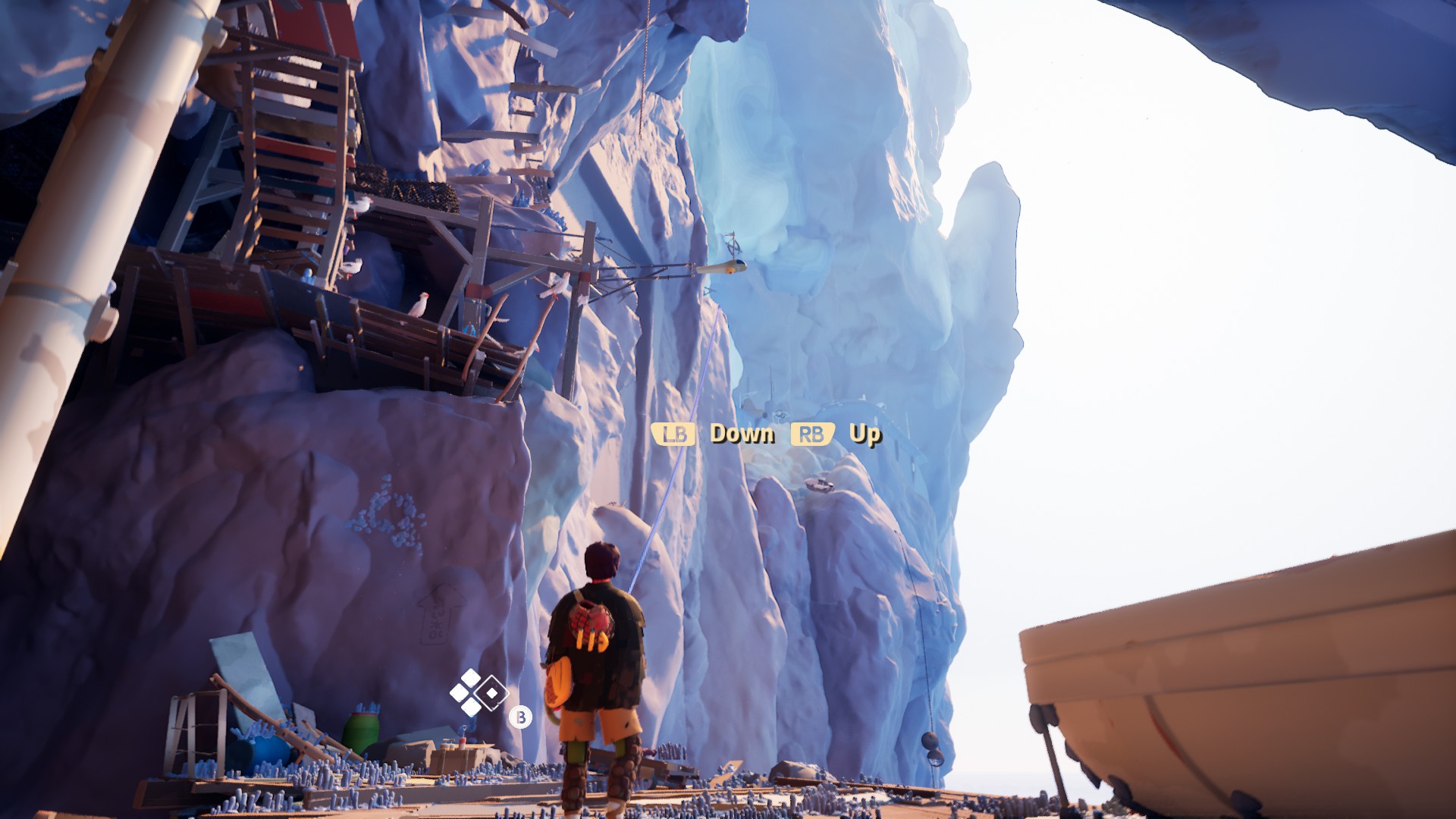
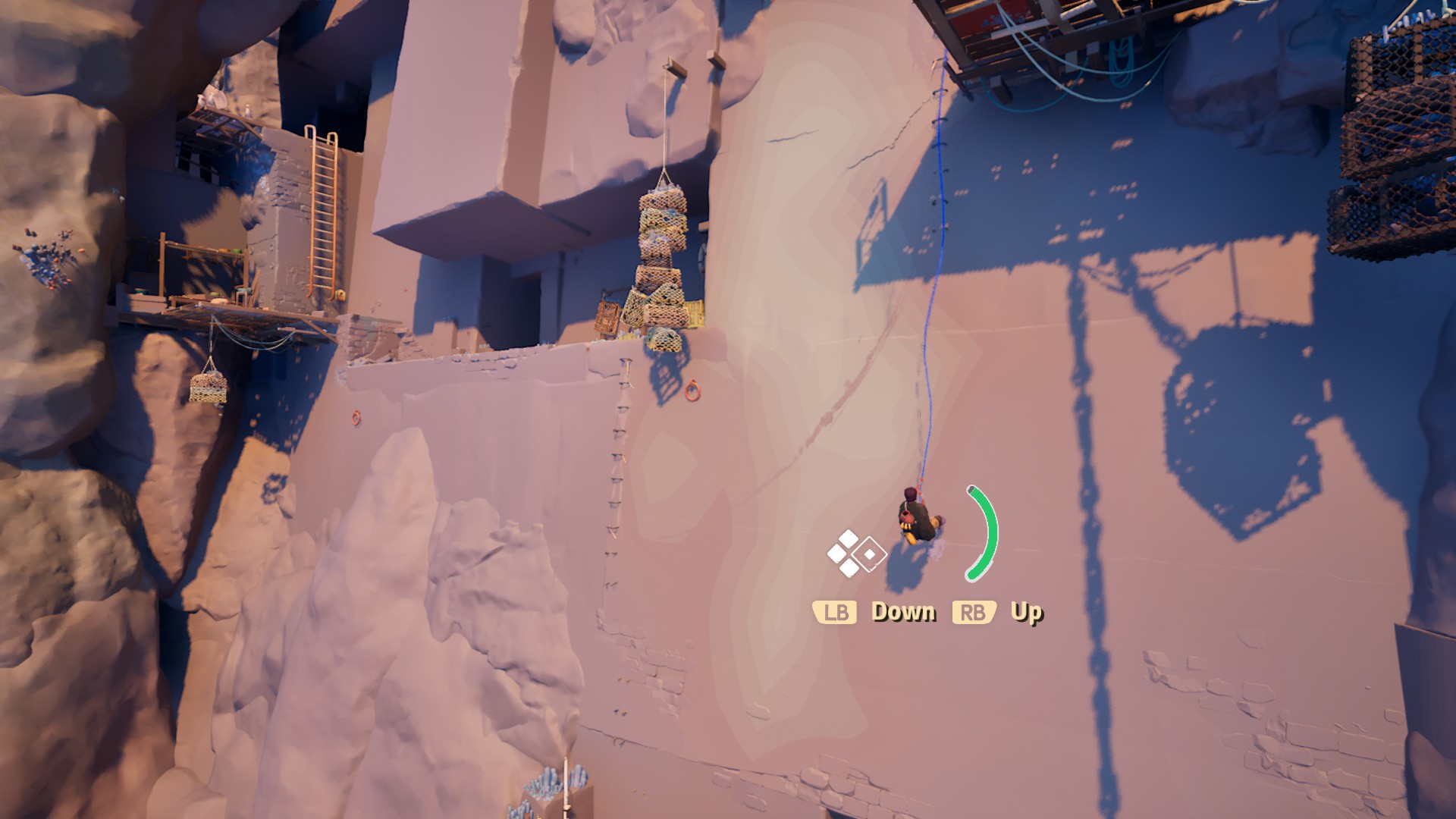
Jusant’s environments get more treacherous the further up the tower you go, putting all your acquired climbing knowledge to the test. Each stretch of the climb you complete - no matter how short - feels like a massive triumph, especially when up against an onslaught of elements like heat, wind, and rain.
Everything comes together to create some sensational climbing sequences, and you can feel the drama from the tips of your fingers through to your toes. In moments of pure adrenaline as I hurled myself at a ledge I wasn’t sure I could reach, I gripped the controller like my life depended on it. My toes would curl when I mistimed a jump and ended up slamming into rocky wall. My heart leapt into overdrive at one point when I had to climb over the side of a cliff face that was so vertical the climber was forced to use only their hands while his feet dangled into oblivion. My entire body would sigh with relief as I pulled myself to safety over the last ledge after a long stretch of treacherous climbing. Jusant has a wonderful way of connecting with your body - it’s incredibly visceral.
Jusant isn’t a complete thrill ride, though. When you get into the rhythm of climbing - sensing it’s time to put in a piton for safety, the rhythmic switching of left to right, making careful and informed decisions based on the rock face - there’s a genuine feeling of flow. Between the nerve-shredding jumps and dizzying heights, there’s a sense of peace, too. Taking the time to plan your route and then carefully carrying it out step by step has its own quiet satisfactions, and together with the game’s peaceful music, it can be incredibly serene.
Catch your breath
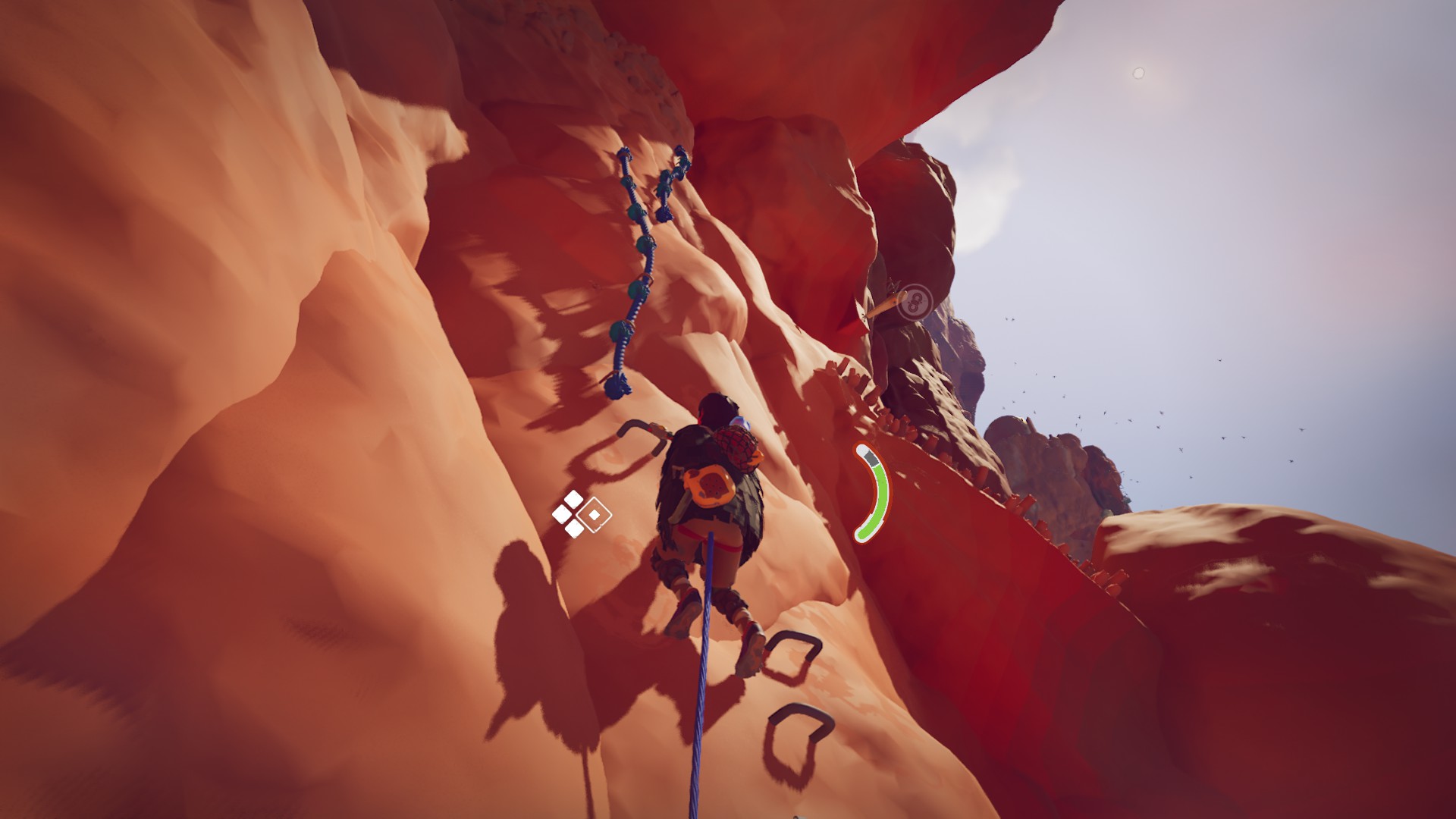
Most of Jusant is pretty sensational, but there are some frustrating moments. When exploring on foot, the climber easily clips into objects and can accidentally wedge themselves in environmental nooks and crannies if you’re not careful. There’s also a mechanic (that thankfully doesn’t hang around) where little light creatures can boost you a short way up the rock face. You'll be connecting with the tower's critters on your journey, but this particular instance feels lofty and fumble-prone, not fitting in well with the game’s overall appreciation of careful and accurate climbing.
Making mistakes stings and losing progress on a climb can be disheartening, but it often happened when I wasn’t paying enough attention or was too keen to finish a long stretch. Jusant is a game that can't be brute forced, and the sooner you learn that the fewer mistakes you’ll make.
The environment tells a quiet history too, with peculiar sights like boats nestled into parts of the tower hundreds of feet from the ground
There's also Jusant's story, a big contributor to the game's more tranquil moments. You're ascending but also exploring, poking in and around the long-abandoned villages and rickety structures embedded into the tower. Letters and notes scattered around these living spaces tell the story of the civilization that once lived here and, eventually, decided to leave. The environment tells a quiet history too, with peculiar sights like boats nestled into parts of the tower hundreds of feet from the ground, and caverns filled with plantlife that usually thrives under the ocean. I enjoyed finding these oddities, but the tower's elusive history might have been better told if Dont Nod let the environment do the talking, instead of pages upon pages of text.
Regardless, Jusant’s story hits home. It tells the tale of returning to a place long forgotten and restoring something that was once lost, a pursuit the young traveler finds so important that they'll undertake this mammoth venture. Together with its tactical climbing system, heart-racing thrills, and tranquil reflections, Jusant's climbing adventure is pretty epic, and definitely its own endeavor worth pursuing.
Accessibility features
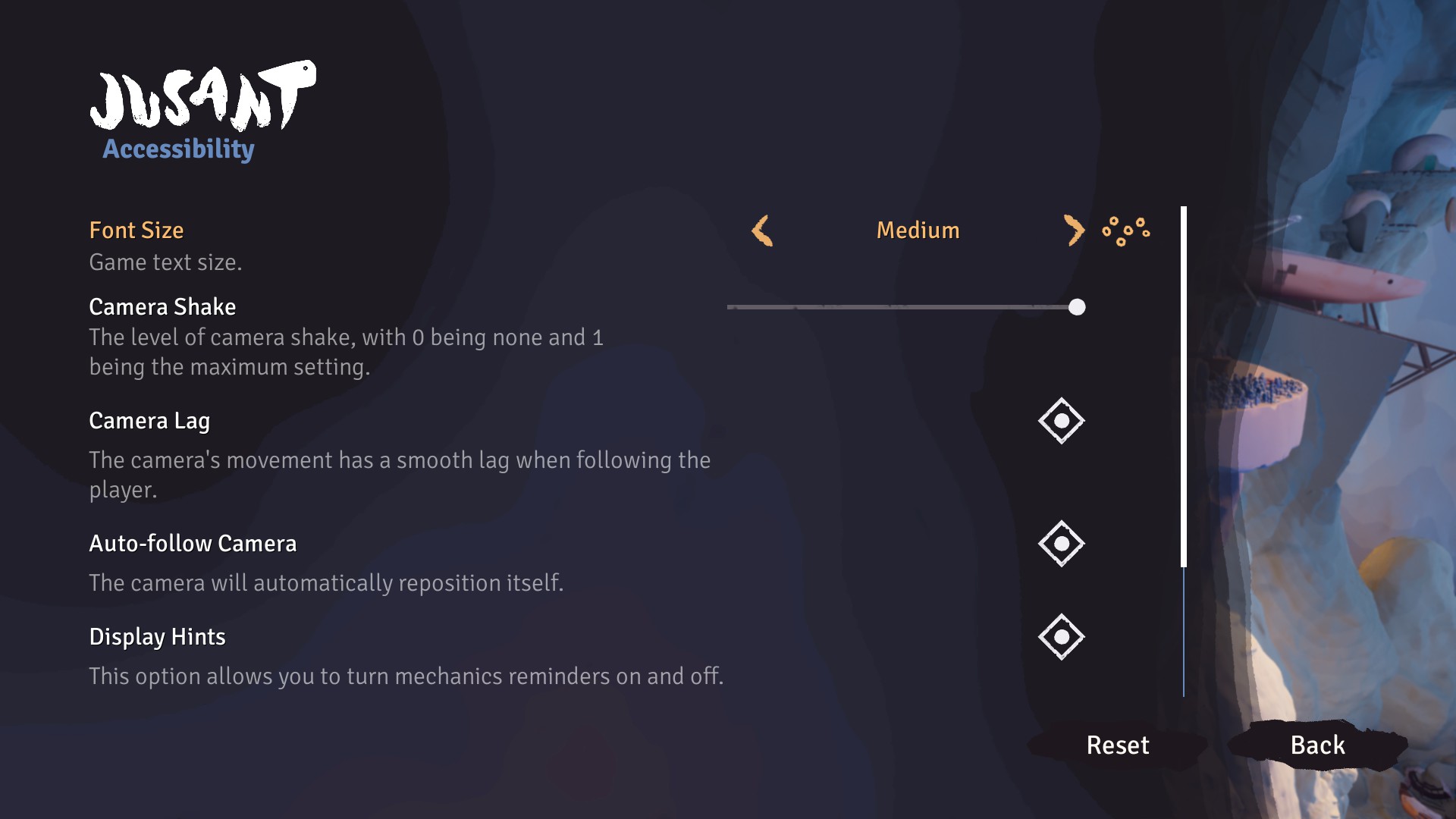
Jusant has a handful of accessibility options. You can completely remap the layouts for controllers as well as keyboard & mouse inputs. Game text size can be altered (and there’s also a dyslexic font option). Hints and mechanics reminders can be toggled if you find them interruptive and the level of camera shake can be adjusted and set to auto-follow if needed.
How we reviewed Jusant
I played Jusant for around 12 hours: my first play-through took five hours, and then I replayed levels from a chapter menu to find all the secrets and collectibles in a second playthrough which took me around seven hours. I played on PC with an Xbox controller. The game recommends playing with a controller which is something I echo, notably for game feel rather than for any particular practical reasons.
If you're looking for more small adventures check out our rundowns of the best indie games, and best cozy Switch games too.
Comments
Post a Comment